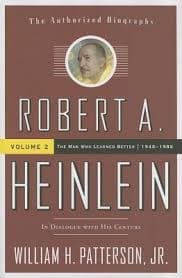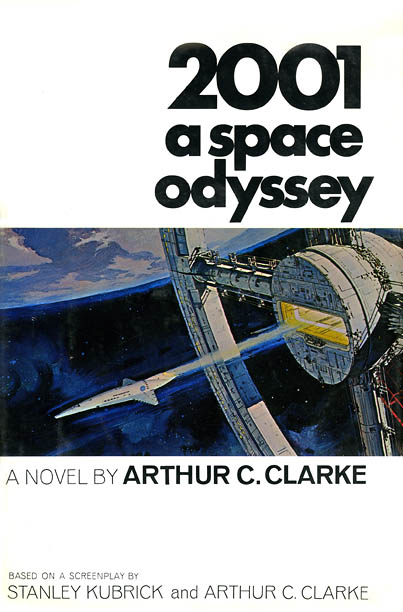Arthur C. Clarke vs. Robert Heinlein: the scifi giants’ smackdown (article).
Ah, the age-old question: Arthur C. Clarke vs. Robert Heinlein. Two giants of science fiction, both with their own unique styles and approaches to storytelling. So, what are the differences between these titans of the genre?
First, let’s start with Arthur C. Clarke. Known for his novel “2001: A Space Odyssey” and his famous three laws of prediction, Clarke was a master of hard science fiction. His stories often revolved around scientific concepts and featured highly advanced technology. He was a proponent of the idea that science and technology could solve many of humanity’s problems and pave the way for a bright future.
In contrast, we knew Robert Heinlein for his more philosophical approach to science fiction. His stories often explored the moral and ethical implications of new technologies, and we recognised him for his libertarian beliefs. Heinlein’s writing often featured strong, independent characters who rejected authority and convention in pursuit of their own goals.
Another key difference between the two authors is their writing styles. Clarke’s prose was generally more technical and straightforward, while Heinlein’s was more florid and imaginative. We can see this in their most famous works: “2001: A Space Odyssey” is a more cerebral, thought-provoking novel, while “Stranger in a Strange Land” is a more emotionally charged and ingenious tale.
Ultimately, the differences between Clarke and Heinlein come down to their approaches to science fiction. Clarke was a proponent of the idea that science and technology could lead to a better future, while Heinlein was more interested in exploring the moral and ethical implications of new technologies. Both authors were giants of the genre, and their works continued to inspire and entertain readers to this day.
One interesting difference between the two authors is their backgrounds. Arthur C. Clarke was a British scientist and inventor, while Robert Heinlein was a former U.S. Navy officer. They reflect this distinction in background in their writing, with Clarke’s work regularly featuring a more cerebral, technical approach, while Heinlein’s is usually more rugged and militaristic.
For example, in “2001: A Space Odyssey,” Clarke examines the concept of artificial intelligence and its potential impact on humanity. The novel is full of technical details and scientific concepts, and it stars a highly advanced computer named HAL that ultimately becomes the chief antagonist. In contrast, Heinlein’s “Starship Troopers” is a more action-packed tale that follows a group of soldiers as they fight against alien invaders. The novel analyzes themes of militarism and patriotism, and it spotlights several intense battle scenes.
Another difference between the two authors is their views on community and human nature. Clarke was a utopian, believing that humanity could eventually create a pure society through the use of science and technology. His novel “The City and the Stars” is a prime example of this, depicting a distant future in which humanity lives in an ideal city where all needs are met and we have solved all problems. Heinlein, on the other hand, was more skeptical of human personality. His novel “The Moon is a Harsh Mistress” portrays a lunar colony struggling for independence from Earth, and it explores the challenges of creating a functional culture in a harsh, unforgiving environment.
In conclusion, while both Arthur C. Clarke and Robert Heinlein were masters of science fiction, they had very different approaches to the genre. Clarke was a technical writer who believed in the power of science and technology to create a better future, while Heinlein was more skeptical and focused on exploring the moral and ethical implications of new technologies. Their activities continue to be celebrated and studied by fans and scholars alike.
Both Arthur C. Clarke and Robert Heinlein have had their works adapted into films.
Perhaps the most famous adaptation of Clarke’s work is Stanley Kubrick’s “2001: A Space Odyssey.” The film, which was released in 1968, is a loose reworking of Clarke’s novel of the same name, and it explores many of the same themes and ideas. The flick was a critical and commercial success, and it is widely regarded as one of the greatest science fiction films of all time.
Another movie based on Clarke’s work is “2010: The Year We Make Contact,” which is a sequel to “2001: A Space Odyssey.” The film, which was released in 1984, continues the story of the sentient computer HAL and follows a team of astronauts as they try to make contact with a mysterious alien intelligence.
As for Heinlein, his most famous work to be adapted into a movie is probably “Starship Troopers.” The 1997 film, which was directed by Paul Verhoeven, is a loose adaptation of Heinlein’s novel of the same name, and it explores similar themes of militarism and patriotism. The flick was a box office success, and it spawned two sequels and several spin-off media.
Besides these adaptations, both Clarke and Heinlein have had many of their other novels adapted into films and television shows. For example, Clarke’s “Rendezvous with Rama” was adapted into a film that is currently in development, and Heinlein’s paperback “The Puppet Masters” was turned into a 1994 movie starring Donald Sutherland. Overall, both authors have had a lasting impact on the world of science fiction, and their creations continue to inspire fresh stories and reworks.
In addition to their writing, both Arthur C. Clarke and Robert Heinlein generated significant contributions to the field of science.
Clarke is perhaps best known for his three laws of prediction, which he first proposed in a 1945 essay titled “Extra-Terrestrial Relays.” The three laws are:
When a distinguished but elderly scientist states that something is possible, he is almost certainly right. When he states that something is unreasonable, he is very probably wrong.
The only means of discovering the limits of the possible is to venture a little way past them into the impossible.
Any sufficiently advanced technology is indistinguishable from magic.
These laws have become a key part of the scientific community, and we often cite them in discussions of the potential impacts of new technologies. Clarke was also a pioneer in the field of satellite transmission, and he played a vital early role in the development of geostationary satellites, which are used for global comms and weather forecasting.
As for Heinlein, he was a vigorous advocate for space exploration and the colonization of other planets. Many of his novels, including “The Moon is a Harsh Mistress” and “Starship Troopers,” explore the challenges and rewards of living and working in space. Heinlein’s work helped to influence a generation of physicists and engineers, and his views continue to influence the area of space exploration to this day.
While both Arthur C. Clarke and Robert Heinlein were science fiction authors, their titles often had political undertones.
Clarke was a self-described socialist and believed in the potential of science and technology to create a better, more fair society. This belief can be seen in many of his novels, such as “The City and the Stars,” which portray a perfect city where all needs are met and we have solved all problems.
Heinlein, on the other hand, was a libertarian and supported the importance of individual freedom and self-reliance. His novel “The Moon is a Harsh Mistress” explores the challenges of creating a functional society in a harsh, unforgiving environment, and it portrays a lunar colony struggling for independence from Earth. Many see the tale as a commentary on the dangers of government overreach and the value of individual liberty.
Overall, both Clarke and Heinlein’s works had political undertones, but they often expressed their views in subtle and nuanced ways. While their beliefs may have influenced their writing, their stories were ultimately about exploring the potential of science and technology, and the challenges and rewards of living in a rapidly changing world.




